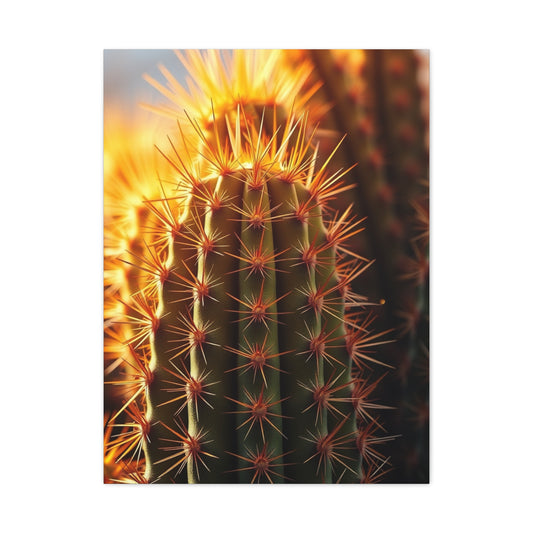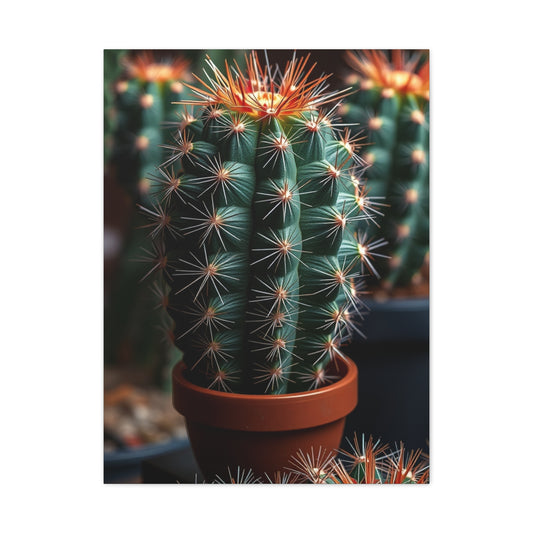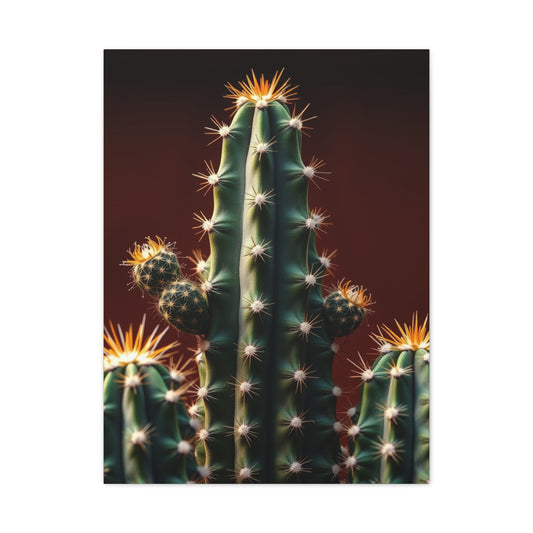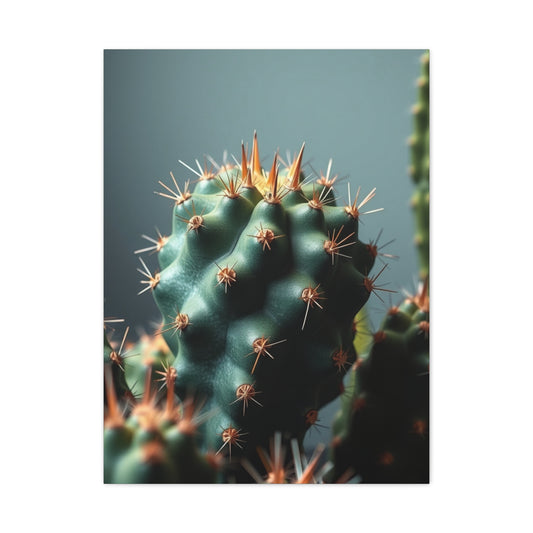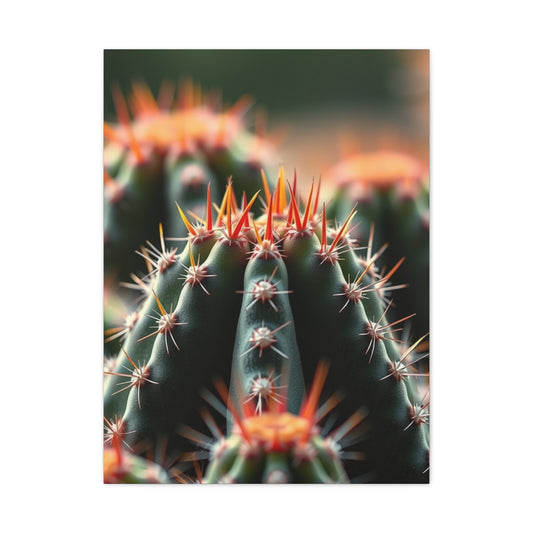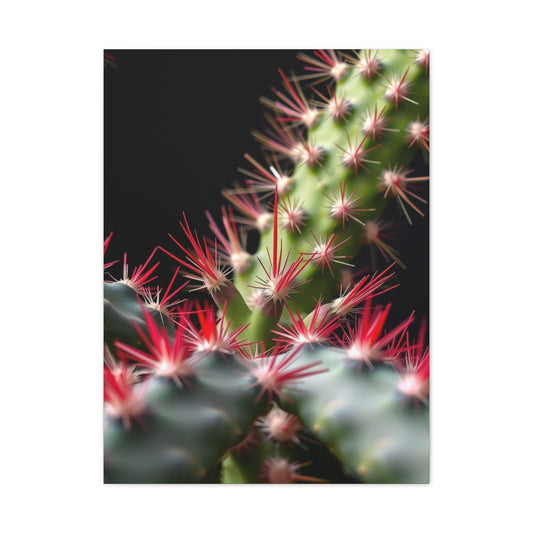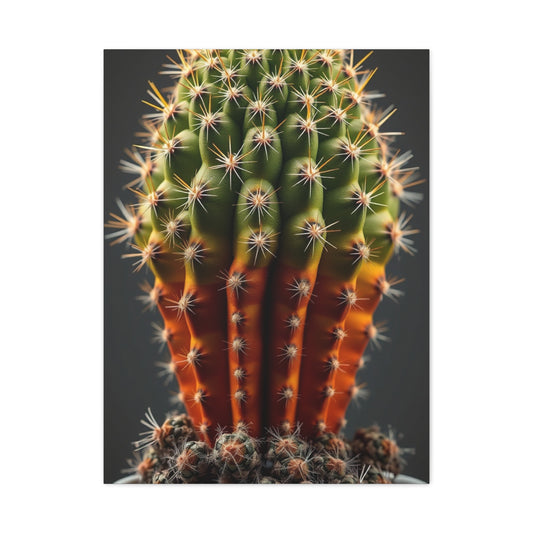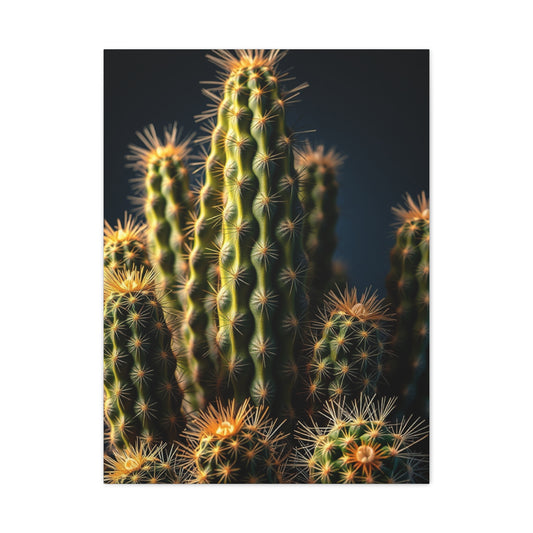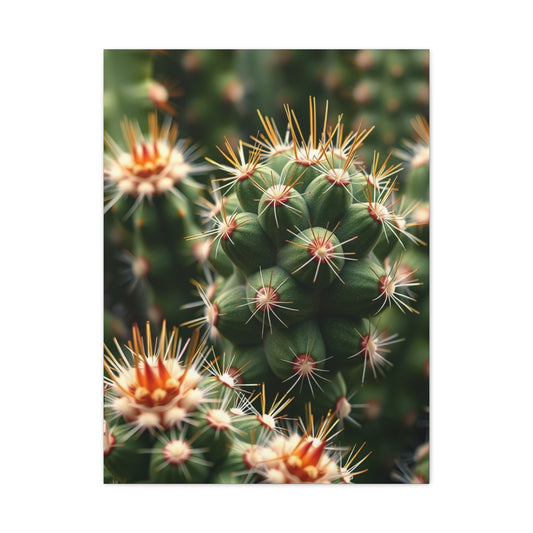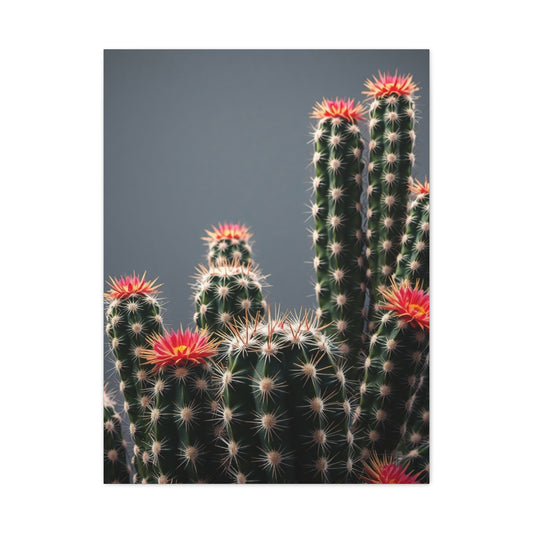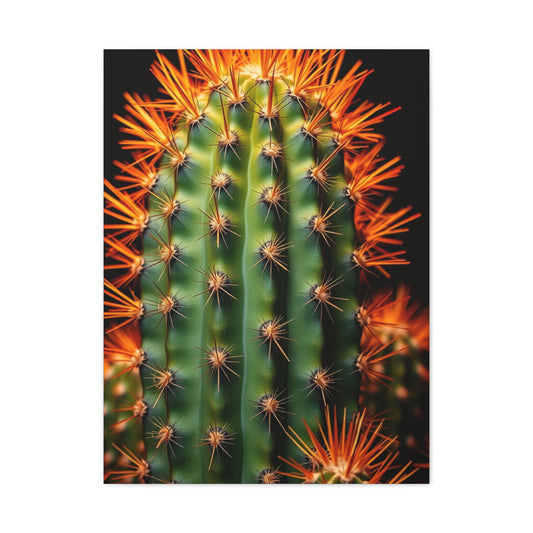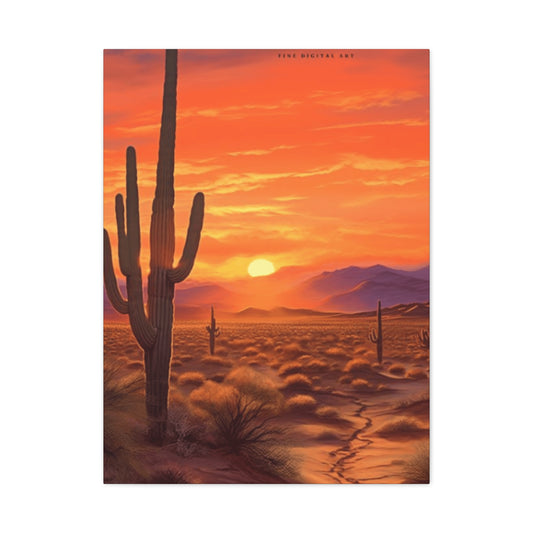Cactus Floral Wall Art: Transform Your Living Space with Desert-Inspired Elegance
The contemporary interior design landscape has witnessed a remarkable surge in the popularity of botanical-themed artwork, with cactus floral wall art emerging as a particularly captivating trend that seamlessly blends natural beauty with artistic sophistication. This distinctive art form captures the mesmerizing allure of desert flora, presenting cacti and succulents in their most vibrant and blooming states, creating visual masterpieces that transcend traditional boundaries between nature photography and artistic interpretation.
The fascination with cactus floral wall art stems from its unique ability to introduce elements of tranquility and organic beauty into modern living spaces while maintaining a sense of contemporary elegance. Unlike conventional floral artwork that might feature traditional garden varieties, cactus floral pieces celebrate the extraordinary resilience and unexpected beauty of desert plants, showcasing their remarkable ability to produce stunning blossoms even in the harshest environments.
This art form particularly resonates with homeowners seeking to create spaces that reflect both sophistication and a connection to the natural world. The inherent symbolism of cacti – representing endurance, protection, and the ability to thrive in challenging conditions – adds deeper meaning to these decorative pieces, making them more than mere aesthetic enhancements but rather meaningful statements about resilience and beauty emerging from unlikely circumstances.
The artistic representation of cacti and succulents in full bloom challenges preconceived notions about desert vegetation, revealing the spectacular displays of color and form that these remarkable plants can produce. From the delicate pink blossoms of prickly pear cacti to the vibrant yellow flowers of barrel cacti, these artworks celebrate the diverse and often surprising beauty of arid-climate flora.
Modern cactus floral wall art employs various artistic techniques to capture the essence of these extraordinary plants, ranging from hyperrealistic photography that showcases every spine and petal in stunning detail to more impressionistic interpretations that focus on capturing the emotional impact and atmospheric qualities of desert blooms. The versatility of this art form allows it to complement a wide range of interior design styles, from minimalist modern spaces to more eclectic bohemian environments.
The growing appreciation for sustainable living and xerophytic gardening has also contributed to the increased interest in cactus floral wall art. As more people become conscious of water conservation and seek low-maintenance landscaping solutions, the aesthetic appeal of these hardy desert plants has gained recognition beyond their practical benefits. This cultural shift towards embracing drought-resistant plants has naturally extended into the realm of interior decoration, where cactus-themed artwork serves as a celebration of sustainable beauty.
Historical Evolution of Desert-Inspired Artistic Expression
The artistic representation of desert flora, particularly cacti and succulents, has deep historical roots that extend far beyond contemporary interior design trends. Indigenous cultures of the Americas have long celebrated these resilient plants through various forms of artistic expression, recognizing their vital importance for survival in arid environments and their symbolic significance as representations of endurance and adaptability.
Pre-Columbian civilizations, including the Aztecs and various southwestern Native American tribes, incorporated cactus imagery into their pottery, textiles, and ceremonial objects, often depicting these plants alongside their vibrant blooms as symbols of life flourishing in challenging conditions. These early artistic interpretations laid the groundwork for the modern appreciation of cactus floral art, establishing a cultural foundation that recognizes the profound beauty and significance of desert vegetation.
During the colonial period and the subsequent western expansion across North America, European settlers encountered the remarkable diversity of desert flora and began documenting these discoveries through botanical illustrations and artistic renderings. Scientific expeditions of the 18th and 19th centuries produced detailed drawings and paintings of cacti and succulents, many of which captured these plants during their spectacular blooming periods, creating some of the earliest examples of what we might now consider cactus floral art.
The emergence of photography in the mid-19th century revolutionized the documentation and artistic representation of desert flora. Early photographers like William Henry Jackson and Timothy O'Sullivan ventured into the American Southwest, capturing unprecedented images of cacti in their natural habitats, including many photographs that showcased the unexpected beauty of desert blooms. These photographic pioneers established a visual vocabulary for desert landscape photography that continues to influence contemporary cactus floral wall art.
The 20th century witnessed the rise of southwestern regionalism in American art, with artists like Georgia O'Keeffe bringing desert flora into the mainstream art world through her iconic paintings of southwestern landscapes and close-up studies of flowers and plants. O'Keeffe's work, in particular, demonstrated how the forms and colors of desert vegetation could be transformed into powerful artistic statements that spoke to universal themes of beauty, resilience, and natural wonder.
The mid-century modern movement of the 1950s and 1960s embraced clean lines, natural materials, and connections to the outdoor environment, creating an ideal context for the appreciation of desert-themed artwork. During this period, cactus and succulent imagery began appearing more frequently in residential and commercial interiors, often as part of larger southwestern design schemes that celebrated the distinctive culture and landscape of the American desert regions.
The contemporary revival of interest in mid-century modern design, combined with growing environmental consciousness and appreciation for sustainable living, has created perfect conditions for the current popularity of cactus floral wall art. Modern printing technologies and digital art techniques have expanded the possibilities for creating and reproducing high-quality cactus-themed artwork, making it accessible to a broader audience while maintaining the artistic integrity that makes these pieces so compelling.
Understanding the Aesthetic Appeal of Desert Flora Artwork
The magnetic appeal of cactus floral wall art lies in its remarkable ability to challenge conventional notions of beauty while simultaneously celebrating the extraordinary adaptations that allow life to flourish in seemingly impossible conditions. This unique aesthetic combines elements of surprise, resilience, and unexpected delicacy, creating visual compositions that captivate viewers through their inherent contradictions and harmonious resolution of opposing forces.
The structural beauty of cacti and succulents provides a fascinating study in natural geometry and engineering. These plants have evolved sophisticated forms that maximize water collection and storage while minimizing surface area exposed to harsh desert conditions. The resulting shapes – from the perfectly symmetrical spheres of barrel cacti to the architectural branching patterns of chollas and the sculptural rosettes of agaves – create naturally occurring compositions that rival any human-designed artistic creation.
When these remarkable plants produce flowers, the contrast between their protective, often formidable exterior structures and their delicate, vibrant blooms creates a visual tension that forms the heart of cactus floral art's appeal. The juxtaposition of sharp spines with soft petals, of muted desert tones with brilliant floral colors, creates compositions that are both surprising and deeply satisfying from an aesthetic perspective.
Color plays a crucial role in the appeal of cactus floral artwork. The palette typically associated with desert environments – sage greens, dusty blues, warm earth tones, and silvery grays – provides a sophisticated and calming foundation that complements modern interior design trends. When punctuated by the intense colors of cactus flowers – electric pinks, sunny yellows, deep purples, and brilliant oranges – these compositions achieve a perfect balance between subtlety and drama.
The textural qualities of cactus floral art add another layer of visual interest. High-quality reproductions capture the waxy surfaces of succulent leaves, the fuzzy areoles of certain cactus species, the translucent quality of flower petals, and the intricate patterns of spines and scales. This textural richness creates artwork that engages viewers on multiple sensory levels, even when experienced purely through visual observation.
The symbolic resonance of cactus imagery adds depth to its aesthetic appeal. These plants represent survival, adaptation, and the ability to find beauty and purpose in challenging circumstances. For many viewers, cactus floral art serves as a visual reminder of personal resilience and the potential for growth and flowering even in difficult conditions. This symbolic dimension elevates the artwork beyond mere decoration, imbuing it with personal meaning and emotional significance.
The scale and proportional relationships within cactus floral compositions contribute significantly to their visual impact. Many effective pieces play with the relationship between the massive, architectural forms of mature cacti and the delicate, ephemeral nature of their flowers. This scale contrast creates dynamic compositions that hold viewer attention while providing multiple focal points and areas of visual interest within a single artwork.
Lighting effects in cactus floral art often emphasize the unique qualities of desert environments, where intense sunlight creates dramatic contrasts between light and shadow, highlighting the three-dimensional qualities of plant forms while creating atmospheric depth and mood. The interplay of light across cactus surfaces and through translucent flower petals creates luminous effects that enhance the overall impact of the artwork.
Exploring Diverse Styles and Artistic Approaches
Contemporary cactus floral wall art encompasses an extraordinary range of artistic styles and approaches, each offering unique interpretations of desert flora that cater to different aesthetic preferences and interior design requirements. Understanding these various stylistic approaches enables discerning collectors and decorators to select pieces that perfectly complement their spaces while expressing their personal artistic sensibilities.
Photorealistic representations form one of the most popular categories of cactus floral art, utilizing advanced photography techniques and high-resolution printing to capture every detail of these remarkable plants in stunning clarity. These pieces often focus on macro photography that reveals intricate details invisible to casual observation – the delicate structure of individual spines, the subtle gradations of color within flower petals, the complex patterns of light and shadow across succulent surfaces. Photorealistic cactus art appeals particularly to viewers who appreciate technical excellence and want to bring the authentic beauty of desert environments into their living spaces.
Impressionistic interpretations of cactus floral subjects take a more artistic approach, emphasizing mood, atmosphere, and emotional response over precise botanical accuracy. These pieces often employ loose brushwork, soft color transitions, and dreamy lighting effects to create evocative representations that capture the essence of desert blooms rather than their exact appearance. Impressionistic cactus art works particularly well in spaces designed for relaxation and contemplation, where the softer artistic treatment enhances the overall sense of tranquility.
Minimalist approaches to cactus floral art strip away extraneous details to focus on essential forms and relationships. These pieces often feature clean lines, simplified shapes, and limited color palettes that emphasize the architectural qualities of cacti and succulents. Minimalist cactus art integrates seamlessly with contemporary and modern interior design styles, providing sophisticated focal points without overwhelming the overall aesthetic of carefully curated spaces.
Abstract interpretations push the boundaries of recognizable representation, using cactus and succulent forms as inspiration for explorations of color, texture, and composition that may bear little resemblance to their botanical sources. These pieces often emphasize the emotional and symbolic qualities associated with desert flora, creating artworks that communicate feelings of resilience, growth, and natural beauty through purely artistic means. Abstract cactus art appeals to viewers who appreciate conceptual artwork and want pieces that spark conversation and contemplation.
Mixed media approaches combine various artistic techniques and materials to create unique interpretations of cactus floral subjects. These pieces might incorporate photography with painted elements, digital manipulation with traditional drawing techniques, or collage elements with conventional artistic media. Mixed media cactus art often produces distinctive pieces that stand out from more conventional approaches while offering opportunities for artists to explore innovative expressions of their desert flora inspirations.
Vintage-inspired cactus floral art draws upon historical botanical illustration traditions, often mimicking the style and presentation of 19th-century scientific drawings and field guides. These pieces typically feature detailed line work, muted color palettes, and formal compositional arrangements that evoke the scholarly tradition of botanical documentation. Vintage-style cactus art works particularly well in traditional and transitional interior design schemes, where the classical artistic approach complements more established decorative elements.
Contemporary digital art techniques have opened new possibilities for cactus floral representation, allowing artists to create surreal, fantastical, or highly stylized interpretations that would be impossible through traditional artistic media. Digital cactus art often features enhanced colors, impossible lighting effects, and dreamlike compositions that push the boundaries of realistic representation while maintaining recognizable connections to their desert flora inspirations.
Watercolor treatments of cactus floral subjects emphasize the delicate, translucent qualities that can emerge when these hardy plants produce their spectacular blooms. The fluid nature of watercolor media creates soft edges and gentle color transitions that contrast beautifully with the typically rigid, architectural forms of cacti and succulents. Watercolor cactus art brings a sense of lightness and airiness to interior spaces while maintaining connection to the natural world.
Selecting the Perfect Cactus Floral Art for Your Space
Choosing the ideal cactus floral wall art for your living space requires careful consideration of multiple factors that extend beyond simple aesthetic preference. The most successful selections achieve harmony between the artwork, the existing interior design elements, and the intended function of the space while reflecting the personal style and preferences of the occupants. This comprehensive approach to selection ensures that your cactus floral art becomes an integral part of your home's overall design narrative rather than merely an decorative afterthought.
Room size and scale considerations play a crucial role in determining the appropriate dimensions for cactus floral artwork. Large, open spaces can accommodate oversized pieces or multiple coordinated works that create dramatic focal points and help define different areas within expansive rooms. These generous scales allow viewers to appreciate fine details while creating impressive visual impact that matches the grandeur of the space. Conversely, smaller rooms benefit from more modestly sized pieces that provide visual interest without overwhelming the available wall space or competing with other design elements.
The existing color palette within your space significantly influences the selection of appropriate cactus floral art. Rooms dominated by neutral tones offer maximum flexibility for incorporating vibrant cactus bloom colors, allowing the artwork to serve as a primary source of color and visual excitement. Spaces with established color schemes require more careful coordination to ensure that the chosen artwork complements rather than clashes with existing hues. The natural color palette of most cactus floral art – featuring sage greens, dusty blues, earth tones, and vibrant flower colors – typically integrates well with a wide range of interior color schemes.
Lighting conditions within the intended display area affect both the selection of appropriate artwork and its ultimate visual impact. Rooms with abundant natural light can showcase pieces with subtle color variations and delicate details that might be lost in dimmer environments. Spaces with limited natural light benefit from artwork featuring brighter colors and higher contrast that remain visible and impactful under artificial illumination. The direction and quality of available light also influence how colors appear throughout different times of day, making it important to consider how the chosen artwork will look under various lighting conditions.
The architectural style and period of your home provide important context for selecting compatible cactus floral art. Contemporary and modern spaces naturally accommodate most styles of cactus art, from photorealistic to abstract interpretations. Traditional homes might benefit from more classical artistic treatments, such as vintage-inspired botanical illustrations or impressionistic paintings. Mid-century modern interiors particularly welcome cactus floral art, given the historical connection between this architectural movement and southwestern design aesthetics.
Furniture styles and arrangements within the space influence both the positioning and selection of cactus floral artwork. Pieces displayed above sofas or beds need sufficient scale to maintain proper proportional relationships with the furniture below. Artwork positioned near dining areas or conversation spaces benefits from subjects and treatments that encourage contemplation and discussion without becoming distracting during meals or social gatherings. The clean lines and geometric forms of much contemporary furniture pair beautifully with the architectural qualities of cactus subjects.
Personal lifestyle and usage patterns for different spaces within your home affect the appropriateness of various artistic approaches. High-traffic areas benefit from durable artwork with straightforward subject matter that maintains appeal under frequent viewing. Private spaces like bedrooms or studies can accommodate more complex or contemplative pieces that reward extended observation and reflection. Areas used for entertaining might feature conversation-starting pieces that combine aesthetic appeal with interesting visual details or artistic techniques.
The intended longevity of your interior design scheme influences the wisdom of selecting artwork with timeless appeal versus more trend-driven interpretations. Classic photographic treatments of cactus subjects and traditional artistic approaches tend to maintain their relevance over longer periods. More stylized or contemporary interpretations might better serve spaces that undergo frequent decorative updates or where shorter-term visual impact takes precedence over long-term compatibility.
Budget considerations naturally influence the range of available options, but numerous excellent choices exist across all price points. High-end original artwork and limited-edition prints offer unique pieces with exceptional quality and potential appreciation value. Mid-range options include high-quality reproductions and prints that provide excellent visual impact at more accessible prices. Budget-friendly alternatives can still offer attractive cactus floral imagery suitable for many applications, particularly when selected with attention to quality and appropriate sizing.
The technical specifications of potential artwork selections deserve consideration alongside aesthetic factors. Print quality, substrate materials, and framing options all affect the longevity and visual impact of the finished piece. UV-resistant inks and archival substrates ensure that colors remain vibrant over time, while appropriate framing protects the artwork while enhancing its presentation. Understanding these technical aspects helps ensure that your investment in cactus floral art provides lasting satisfaction and value.
Interior Design Integration Strategies
Successfully integrating cactus floral wall art into your interior design scheme requires strategic thinking about how these distinctive pieces will interact with existing design elements while contributing to the overall aesthetic narrative of your space. The unique characteristics of cactus and succulent imagery – combining natural beauty with architectural form, desert colors with vibrant blooms – offer versatile opportunities for enhancing various design styles while creating cohesive, visually appealing environments.
Creating focal points represents one of the most effective applications of cactus floral wall art within interior spaces. Large-scale pieces or carefully arranged groupings can anchor entire rooms, providing central visual elements around which other design decisions revolve. The naturally dramatic forms of cacti and the surprising beauty of their flowers create compelling focal points that draw attention while maintaining sophisticated appeal. When positioning artwork as a focal point, consider the primary viewing angles within the room and ensure adequate visual breathing space around the piece to maximize its impact.
Color coordination strategies can utilize the natural palette of cactus floral art to unify disparate design elements or introduce subtle color themes throughout your space. The sage greens and blue-grays characteristic of many succulent plants provide excellent foundation colors that coordinate beautifully with both warm and cool color schemes. The bright flower colors found in cactus blooms offer opportunities to create accent color connections with pillows, rugs, or other decorative accessories, establishing visual rhythm and cohesion throughout the room.
Textural relationships between cactus floral artwork and surrounding design elements can create rich, layered compositions that engage multiple senses and add depth to interior spaces. The varied textures visible in high-quality cactus art – from smooth succulent surfaces to fuzzy cactus areoles to delicate flower petals – can be echoed or contrasted with fabric choices, wall treatments, and decorative objects. Smooth, modern furniture benefits from the textural interest provided by detailed cactus imagery, while rougher, more rustic elements can be balanced by the refined beauty of cactus flowers.
Scale relationships require careful consideration to achieve proper visual balance within your space. Multiple smaller pieces can create dynamic arrangements that provide visual interest without overwhelming other design elements. Gallery wall compositions allow for creative combinations of cactus floral pieces with complementary artwork, creating personalized collections that tell visual stories about your aesthetic preferences and lifestyle. When arranging multiple pieces, consider both individual impact and collective effect, ensuring that each piece contributes to a unified whole.
Seasonal considerations can influence both the selection and presentation of cactus floral artwork. While these pieces typically maintain year-round relevance, their colors and subjects can be coordinated with seasonal decorating schemes. The warm earth tones and vibrant flower colors work particularly well during autumn months, while the fresh greens and bright blooms complement spring decorating themes. The timeless nature of cactus subjects allows them to provide consistent visual anchors while supporting seasonal accent changes.
Lighting design plays a crucial role in maximizing the visual impact of cactus floral wall art. Strategic illumination can highlight textural details, enhance color saturation, and create dramatic shadow effects that add depth and dimension to the artwork. Picture lighting, track systems, or carefully positioned accent lights can transform static wall art into dynamic design elements that change character throughout the day. Natural light sources should be considered to prevent direct sun exposure that might fade sensitive inks or substrates over time.
Complementary plant selections can reinforce the natural themes present in cactus floral artwork while creating living connections between your interior design and the natural world. Small collections of actual succulents or cacti can echo the subjects of your wall art while adding authentic textural and color elements to your space. However, care should be taken to ensure that living plants complement rather than compete with your artwork, maintaining appropriate scale relationships and visual hierarchy.
Furniture placement strategies can optimize the viewing experience and integration of cactus floral art within your overall room layout. Seating arrangements that provide comfortable viewing angles enhance appreciation of artistic details and encourage contemplation of the natural beauty depicted. Furniture styles that echo the clean, architectural lines found in cactus forms create harmonious relationships between your artwork and functional elements. Storage and display solutions can incorporate cactus themes through material choices, colors, or decorative hardware that subtly reinforces your design narrative.
The psychological impact of cactus floral art within interior spaces deserves consideration alongside purely aesthetic factors. These images of resilient plants thriving in challenging conditions can contribute to feelings of calm, stability, and connection with natural processes. The contemplative quality of many cactus subjects makes them particularly suitable for spaces intended for relaxation, study, or meditation. Understanding these psychological dimensions helps ensure that your art selections support the intended function and atmosphere of each space within your home.
Color Psychology and Desert Aesthetics
The color palette inherent in cactus floral wall art carries profound psychological implications that extend far beyond mere aesthetic appeal, influencing mood, perception, and the overall emotional atmosphere of interior spaces. Understanding these color relationships enables more informed selection and placement decisions that maximize both the visual impact and psychological benefits of desert-inspired artwork within your home environment.
Green, as the dominant color in most cactus and succulent imagery, serves as a powerful psychological anchor that connects interior spaces with the natural world while promoting feelings of growth, renewal, and tranquility. The particular shades of green found in desert flora – often muted, blue-tinted, or silvery – create more sophisticated color relationships than the bright, saturated greens associated with temperate climate vegetation. These subtle green variations work exceptionally well in contemporary interior design schemes, providing color interest without overwhelming neutral foundations.
The sage green commonly seen in many succulent species carries associations with wisdom, stability, and spiritual growth, making it particularly appropriate for spaces intended for contemplation, study, or relaxation. This color choice supports focused mental activity while maintaining a calming influence that reduces stress and promotes clear thinking. Rooms featuring sage-toned cactus art often feel more balanced and harmonious, creating environments that support both productivity and rest.
Blue-green hues frequently found in certain cactus species bridge the psychological benefits of both blue and green, combining the calming, cooling effects of blue with the growth-oriented, life-affirming qualities of green. These colors work particularly well in spaces that experience high stress or intense activity, providing visual respite and emotional balance. The cooling nature of blue-green tones can also help balance warmer color elements within a room, creating more comfortable and inviting environments.
Gray and silver tones characteristic of many desert plants offer sophisticated neutral options that support rather than compete with other color elements in your space. These colors carry associations with elegance, professionalism, and timeless style, making them excellent choices for formal spaces or rooms requiring long-term color stability. The metallic qualities of silver-toned plant imagery can create subtle connections with metallic accent pieces and hardware throughout your interior design scheme.
Earth tones present in desert environments – ranging from warm taupes and browns to rich terra cottas and rust colors – provide grounding influences that create feelings of stability, security, and connection to natural environments. These colors work particularly well in living areas and gathering spaces where comfort and warmth take precedence over formal elegance. The organic nature of these hues supports relaxation and social interaction while maintaining sophisticated appeal.
The vibrant flower colors that punctuate cactus floral artwork create opportunities for introducing more dynamic color relationships that energize and inspire. Pink cactus flowers, ranging from pale blush tones to intense magentas, bring warmth, optimism, and gentle energy to interior spaces. These colors work particularly well in bedrooms, bathrooms, and other personal spaces where softer, more nurturing color influences support well-being and self-care.
Yellow and orange cactus blooms introduce cheerful, energizing color notes that promote creativity, enthusiasm, and positive thinking. These warm colors work exceptionally well in kitchens, dining areas, and creative workspaces where mental stimulation and social interaction are desired. The brightness of these flower colors can help balance cooler or more neutral room schemes while adding visual excitement without overwhelming the overall design.
Purple and violet shades found in certain cactus flowers carry associations with creativity, spirituality, and luxury, adding sophisticated color dimensions to interior spaces. These colors work particularly well as accent elements that create visual interest without dominating the overall color scheme. Purple-toned cactus flowers can elevate the perceived elegance of a space while maintaining connections to natural beauty and growth.
Red tones, though less common in cactus flowers, create powerful focal points when they appear in desert floral artwork. These colors carry strong psychological impact, promoting energy, passion, and attention while requiring careful integration to avoid overwhelming other design elements. Red cactus blooms work best as accent colors in larger compositions or in spaces where dramatic color impact supports the intended function.
The interplay between the muted tones of desert plants and the vibrant colors of their flowers creates dynamic color relationships that maintain visual interest while supporting psychological well-being. This natural color balance – combining calming, neutral foundations with energizing accent colors – provides an ideal template for interior color schemes that promote both relaxation and vitality.
Seasonal color variations in cactus floral art allow for subtle adjustments to support changing psychological needs throughout the year. Cooler tones might be emphasized during warmer months to create refreshing visual relief, while warmer flower colors can provide psychological warmth during colder seasons. This flexibility makes cactus floral art particularly valuable for creating adaptable interior environments that respond to changing needs and preferences.
Cultural color associations also influence the psychological impact of desert-themed artwork, particularly in regions where cactus and desert imagery carry specific cultural significance. Understanding these cultural dimensions ensures that color choices support rather than conflict with personal and cultural preferences while maximizing the positive psychological benefits of your art selections.
Placement and Positioning Techniques
The strategic placement and positioning of cactus floral wall art significantly influences both its visual impact and its integration with surrounding design elements, requiring careful consideration of viewing angles, lighting conditions, and spatial relationships to achieve optimal aesthetic and psychological effects. Mastering these placement techniques ensures that your investment in desert-inspired artwork delivers maximum satisfaction and contributes meaningfully to your overall interior design goals.
Height considerations form the foundation of successful art placement, with standard guidelines suggesting that artwork centers should typically hang between 57 and 60 inches from the floor to accommodate average viewing heights while maintaining proper proportional relationships with surrounding elements. However, cactus floral art may benefit from slight adjustments to these standards depending on the specific subject matter and intended viewing experience. Pieces featuring tall, columnar cacti might hang slightly higher to emphasize their vertical nature, while compositions focusing on low-growing succulents might benefit from lower placement that encourages closer examination of botanical details.
Relationship to furniture represents another crucial placement consideration that affects both visual balance and functional integration within your space. Artwork positioned above seating areas should maintain adequate scale to avoid appearing lost or insignificant while ensuring sufficient clearance to prevent physical interference with occupants. The traditional guideline suggesting artwork should span approximately two-thirds to three-quarters of the furniture width below provides a useful starting point, though the unique proportions of some cactus species may warrant adjusted ratios to achieve optimal visual harmony.
Corner placements offer unique opportunities for creating intimate viewing experiences that encourage closer examination of artistic details while making efficient use of available wall space. Cactus floral art works particularly well in corner positions where its natural subject matter can create contemplative focal points that support relaxation and reflection. These placements often benefit from subtle accent lighting that highlights textural details and color variations while creating gentle illumination for nearby seating or reading areas.
Gallery wall arrangements provide opportunities for creating personalized collections that combine multiple cactus floral pieces with complementary artwork or decorative objects. Successful gallery walls require careful attention to spacing, scale relationships, and visual flow to create unified compositions that enhance rather than overwhelm the surrounding space. The natural diversity of cactus species and flowering patterns provides rich material for creating varied yet harmonious collections that maintain visual interest over time.
Hallway and transitional space placements can transform utilitarian areas into engaging visual experiences that guide movement through your home while providing opportunities for appreciating artistic beauty during daily routines. Cactus floral art works particularly well in these applications because its subject matter remains interesting under brief viewing conditions while offering sufficient detail to reward longer observation when time permits. These placements often benefit from series installations that create visual rhythm and narrative flow along extended wall surfaces.
Bathroom placements require special consideration of environmental factors that might affect artwork longevity while recognizing the unique opportunities these private spaces offer for creating personal sanctuaries. High-quality prints with appropriate protective framing can withstand typical bathroom conditions while providing daily inspiration and connection to natural beauty. The symbolism of resilient desert plants thriving in challenging conditions makes cactus floral art particularly appropriate for these personal care environments.
Kitchen placements can introduce natural beauty and sophisticated color into functional spaces while recognizing the practical limitations imposed by cooking activities and cleaning requirements. Cactus floral art positioned away from direct exposure to cooking heat and grease can provide visual interest and color coordination opportunities that enhance the overall design of these important gathering spaces. The earth tones and vibrant flower colors characteristic of desert flora complement many kitchen color schemes while maintaining appropriate aesthetic sophistication.
Bedroom placements offer opportunities for creating restful, contemplative environments that support relaxation and personal renewal. The calming colors and resilient symbolism of cactus subjects make them particularly appropriate for these private spaces where psychological comfort takes precedence over formal design considerations. Positioning artwork where it can be appreciated from the bed while avoiding direct glare from windows or artificial light sources enhances both the aesthetic and functional benefits of these placements.
Office and workspace placements can leverage the symbolic associations of cactus imagery – representing resilience, adaptation, and thriving under challenging conditions – to create motivational and inspiring work environments. The sophisticated color palette and architectural forms of many cactus species complement professional settings while providing visual interest that supports creativity and focus. These placements benefit from positioning that allows for periodic viewing during work breaks without creating distracting focal points during concentrated work periods.
Multiple piece arrangements require careful consideration of both individual artwork impact and collective composition effects to create unified yet varied visual experiences. Symmetrical arrangements provide formal, balanced compositions suitable for traditional or contemporary settings, while asymmetrical groupings can create more dynamic, contemporary effects that support casual or creative environments. The natural diversity of cactus forms and flowering patterns provides rich material for creating engaging multiple piece installations.
Lighting integration significantly affects the success of any art placement, requiring coordination between artificial lighting systems and natural light sources to optimize color rendition and visual impact while preventing damage from excessive UV exposure. Strategic illumination can highlight the textural qualities and color variations that make cactus floral art particularly compelling while creating dramatic effects that enhance the overall ambiance of your space.
Conclusion
Cactus floral wall art represents a remarkable fusion of natural elegance, artistic creativity, and interior design sophistication. By celebrating the resilience, beauty, and unexpected vibrancy of desert flora, this art form transcends conventional botanical decoration and introduces a meaningful narrative into any living space. Unlike traditional floral artwork, which often relies on familiar garden species, cactus floral art draws attention to plants that thrive under challenging conditions, symbolizing endurance, adaptability, and the potential for growth even in the harshest environments. This symbolism imbues each piece with a depth that extends beyond visual appeal, making it a reflection of personal resilience and an inspiring statement within the home.
The versatility of cactus floral artwork allows it to complement a wide array of interior design styles. From photorealistic renderings that capture the intricate textures and vibrant colors of succulent blooms, to minimalist, abstract, or impressionistic interpretations, these pieces can adapt to modern, eclectic, or traditional spaces with equal effectiveness. The interplay of color, form, and texture in cactus art creates dynamic focal points, energizes neutral interiors, and reinforces cohesive design schemes through thoughtful coordination with furniture, textiles, and lighting. Additionally, the psychological and emotional benefits of incorporating desert-themed artwork into interior spaces cannot be overstated. The calming greens, soothing earth tones, and bright floral accents support relaxation, creativity, and a sense of balance, while the enduring symbolism of cacti inspires perseverance and optimism.
Cactus floral wall art also reflects broader cultural and environmental trends. The contemporary emphasis on sustainable living and xerophytic gardening aligns naturally with the popularity of desert-inspired artwork, which celebrates water-efficient, low-maintenance plants in both outdoor and indoor contexts. Historically, the representation of desert flora has deep roots, from indigenous American symbolism to the botanical illustrations of European explorers and the iconic desert landscapes of artists like Georgia O’Keeffe. Modern techniques in photography, digital art, and mixed media have expanded the expressive possibilities of cactus art, making it accessible to collectors and homeowners worldwide while maintaining a connection to its rich cultural and artistic heritage.
Ultimately, cactus floral wall art is more than decorative enhancement—it is an invitation to engage with the resilience, beauty, and transformative power of nature. By thoughtfully selecting, positioning, and integrating these artworks into living spaces, homeowners can create interiors that are not only visually stunning but also emotionally enriching. Whether as a bold focal point in a spacious living room, a calming presence in a bedroom, or a motivational element in a workspace, cactus floral wall art transforms environments, bridging the gap between natural inspiration and artistic expression. Its enduring appeal lies in its ability to connect people to the beauty of the natural world while celebrating themes of perseverance, growth, and elegance, ensuring that this desert-inspired art form will remain a cherished element of contemporary interior design for years to come.

